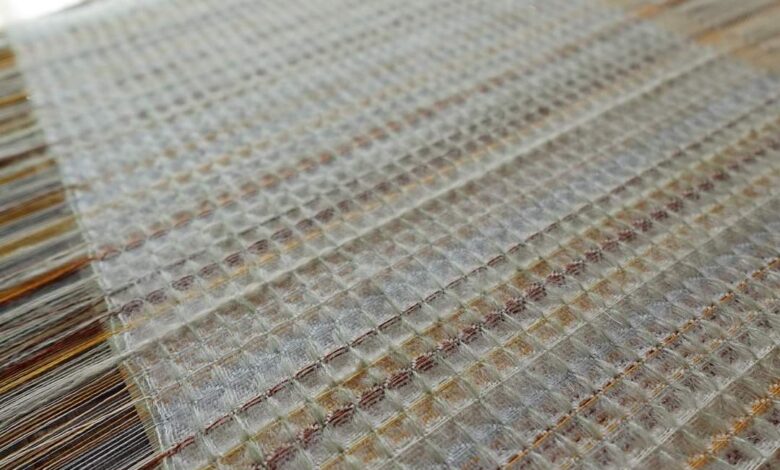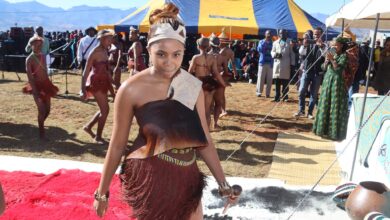20 Things You Should Know About Mohair Weaving

Mohair weaving is a significant traditional craft in Lesotho, reflecting the rich cultural heritage and artisanal skills of the Basotho people. Known for its unique quality and luxurious texture, mohair is derived from the hair of the Angora goat, which thrives in the mountainous terrain of Lesotho. Here are 20 things you should know about mohair weaving in this beautiful country:
1. What is Mohair?
Mohair is a silky fiber obtained from the Angora goat, known for its durability, luster, and warmth. It is one of the oldest textile fibers used in history, often referred to as the “diamond fiber” due to its high quality.
2. Historical Background:
Mohair weaving has deep roots in Lesotho, dating back to the introduction of Angora goats by early settlers. The craft has evolved over generations, becoming an essential part of Basotho culture.
3. Economic Importance:
The mohair industry plays a crucial role in Lesotho’s economy, providing livelihoods for thousands of farmers and artisans. It contributes significantly to both local and national income.
4. Ideal Climate for Angora Goats:
Lesotho’s mountainous terrain and climate create ideal conditions for raising Angora goats. The high altitude and natural vegetation contribute to the quality of mohair produced in the region.
5. The Weaving Process:
Mohair weaving involves several steps, including shearing, washing, dyeing, spinning, and weaving. Each step requires skill and craftsmanship to ensure the final product is of high quality.
6. Traditional Techniques:
Basotho weavers use traditional handlooms to create intricate designs and patterns. The craftsmanship passed down through generations showcases the artistry and skill of the weavers.
7. Vibrant Colors and Patterns:
Mohair products often feature vibrant colors and intricate patterns, reflecting the rich cultural heritage of the Basotho people. Natural dyes from local plants are commonly used to achieve these colors.
8. Types of Products:
The weaving of mohair produces a variety of products, including blankets, scarves, shawls, and traditional clothing. These items are prized for their warmth, softness, and aesthetic appeal.
9. Cultural Significance:
Mohair weaving is not only an economic activity but also a cultural expression. It plays a role in traditional ceremonies, with beautifully woven items often gifted during weddings and other celebrations.
10. Community Involvement:
Mohair weaving is often a communal activity, with women in villages gathering to weave together. This fosters social bonds and promotes the sharing of skills and knowledge.
11. Sustainable Practices:
The mohair industry in Lesotho emphasizes sustainable practices, ensuring the welfare of the goats and the environment. Responsible farming and harvesting techniques are crucial to maintaining quality.
12. Global Demand:
Lesotho is one of the world’s leading producers of mohair, with a growing demand for high-quality mohair products in international markets. This has helped to raise the profile of Lesotho’s weaving industry globally.
13. Challenges Facing the Industry:
Despite its potential, the mohair industry faces challenges such as fluctuating market prices, climate change, and competition from synthetic fibers. Addressing these challenges is vital for its sustainability.
14. Training and Empowerment:
Various organizations are working to provide training and resources for mohair weavers, empowering them with skills to improve production quality and market access.
15. Innovation in Design:
Modern weavers are experimenting with innovative designs and techniques, combining traditional motifs with contemporary aesthetics to appeal to a broader audience.
16. Role in Tourism:
Mohair weaving has become an attraction for tourists visiting Lesotho. Craft workshops and weaving demonstrations provide visitors with a unique insight into the culture and craftsmanship of the Basotho people.
17. Artisanal Value:
Each piece of mohair weaving is considered a work of art, reflecting the individual weaver’s creativity and skill. Handwoven products are often valued higher than mass-produced items.
18. Social Enterprises:
Many weaving cooperatives operate as social enterprises, reinvesting profits into the community and supporting local development projects, thereby enhancing the socio-economic status of the artisans.
19. Preservation of Heritage:
Mohair weaving is crucial in preserving the cultural heritage of Lesotho. It ensures that traditional techniques and designs are passed down to future generations.
20. Future Prospects:
With a focus on sustainability, innovation, and global marketing, the future of mohair weaving in Lesotho looks promising. As demand for ethical and high-quality products increases, mohair weaving is poised for growth and development.
In conclusion, mohair weaving is not just a craft; it is a vital part of Lesotho’s cultural and economic landscape. Through its rich history, community involvement, and commitment to sustainability, this traditional practice continues to thrive, offering a glimpse into the artistry and resilience of the Basotho people.
Join 'Lesotho News' WhatsApp Channel
Get breaking Lesotho news — delivered directly to your WhatsApp.
CLICK HERE TO JOIN



